From maintenance costs and schedules to fire risk, insurance and planning permission: here are the top 20 questions developers ask us! If we don’t get to your question here, please give us a call on +44 1243 545818 or email enquiries@ans.global.
Let’s get started:
1. What is the maintenance regime of a living wall?
The maintenance regime of a living wall is different for every project. However, what is carried out throughout is consistent.
Maintenance visits take place typically monthly, but can be fortnightly, depending on the client’s requirements. These include a visual inspection, adjusting the irrigation levels if necessary and ensuring the soil and plants are in full health. Horticultural husbandry visits are carried out twice a year, and are more intensive. These can include checking for pest and disease, trimming and pruning, applying biological control through the irrigation system or replacing plants where necessary. These twice-yearly visits require access to the whole wall, so in cases where the living wall is over 6 metres high, extra equipment is required. This could be a cherry picker, scissor lift, scaffold tower, spider lift or even access by abseil.
For a full maintenance guide and schedule example, please get in touch and we’ll share.

2. What access for maintenance of a living wall is required?
The access requirements for maintenance depend on the living wall and location. For any living wall over 6 metres high, extra equipment is required for the twice-yearly horticultural husbandry visits. This could be a cherry picker, scissor lift, scaffold tower, spider lift or even access by abseil.
3. Does a living wall use a lot of water?
Compared to systems that use man-made substrates such as rock wall or a geo-textile fabric, natural soil requires minimal water, as it naturally retains moisture. Here’s an example of water usage per week in the winter for a soil-based living wall:
Sunny wall: 16.8 litres/m²/week
Shady wall: 7.6 litres/m²/week
4. What is the lifespan of a living wall?
The lifespan of a living wall is dependant on the wall being maintained as per the O&M manual. If a living wall is cared for appropriately, there is no reason for it not to last forever.
5. What is the warranty of a living wall?
The warranty on an Viritopia Living Wall is 12 months from date of installation. For our warranty conditions, please get in touch and we’ll share with you.
6. How do you mitigate the fire risk of a living wall?
There are a few things that you can do to mitigate the fire risk on a living wall. This includes adapting the build-up, plant selection, irrigation and maintenance schedules. Let’s take a look at what you can do to improve the safety of a living wall in each area:
Build-up:
If you integrate an A2 non-combustible build-up from the inside to the outside of the building, clad the building with a calcium silicate board or another material, then install the living wall on top of that, that improves the fire safety.
The second point is to include fire breaks every 2 metres up the elevation, to contain and stop the spread of fire.
Plant selection:
Avoiding dry grasses and highly oily foliage in your plant palette will improve the fire safety of your finished design. Moving away from the dry oily species and towards evergreen plants that have limited leaf drop is recommended.
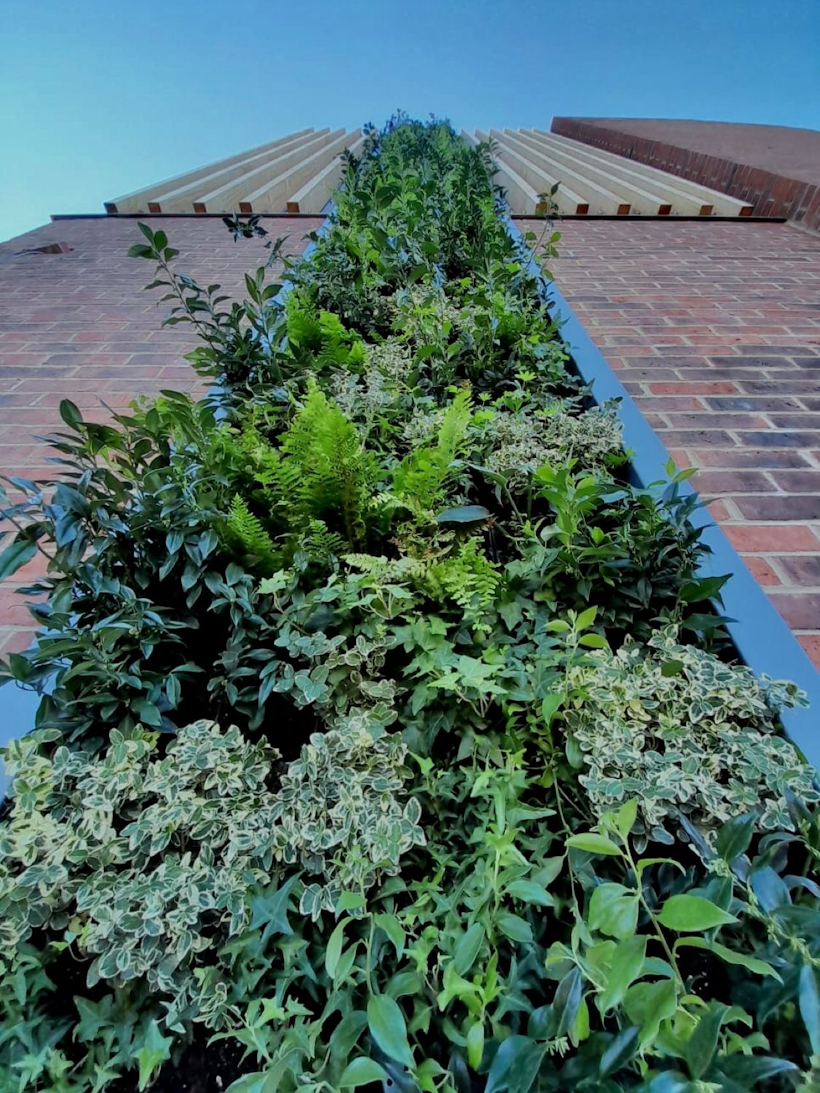
Irrigation:
Irrigation is essential to fire safety as a basic rule. With the Viritopia Living Wall System, we design each living wall to have an electronic solenoid at every vertical metre, so each section of planting can be carefully monitored, and irrigation adjusted. This is to ensure the moisture level is kept at around 45%. As an addition to this irrigation system (which is a standard part of every living wall project we do), you could have an independent sprinkler system that comes out of the planting and drenches the façade in the event of a fire.
Maintenance:
The most essential part to mitigating the fire risk of a living wall is ensuring maintenance. It must be a part of the property management scope that the green infrastructure is maintained and should be regarded just as seriously as any other element of the building.
This ensures that the planting and soil is kept in full health, at the right moisture levels with no dry or dead planting (which is more combustible) and the irrigation is serviced regularly.
7. Is it easy to get insurance when there is a living wall on a building?
The ease of getting insurance on a building with a living wall depends on the insurance company.
We wrote this blog article on ‘Should insurance companies regard living walls as a risk?’ which you may find helpful.
8. How long will the plants last in a living wall?
The lifespan of plants in a living wall depends on the type used. Typically we allow 3-5 years for herbaceous plants (plants with flexible, green stems with few to no woody parts), and 5-7 years for shrubs or plants with woodier stems (for example Begonias or Sarcococca Sweet box). Full plant replacement is covered in our maintenance contract.

9. Do the modules need to be removed for living wall maintenance or plant replacement?
The modules in a living wall do not need to be removed for maintenance or plant replacement.
10. Will the plants roots in a living wall damage the façade?
For the plant roots in a living wall to damage the façade, they’d have to get through multiple layers in the build-up. The membrane behind the module stops condensation and damage to the façade, and the module itself is a sealed unit, so there is no way for the roots to get through that to the wall.
11. Will we gain any green credentials from integrating a living wall?
A living wall can indeed enable you to gain green credentials. Living walls can support a BREEAM rating, help you achieve your biodiversity net gain target and UGF (urban greening factor) targets. It’s all down to the initial consultation and design as to what you can gain from a living wall installation. We recommend discussing this as early as possible in the project with your chosen living wall partner. University of Edinburgh (pictured below) achieved a BREEAM Excellent rating, which the living walls supported.
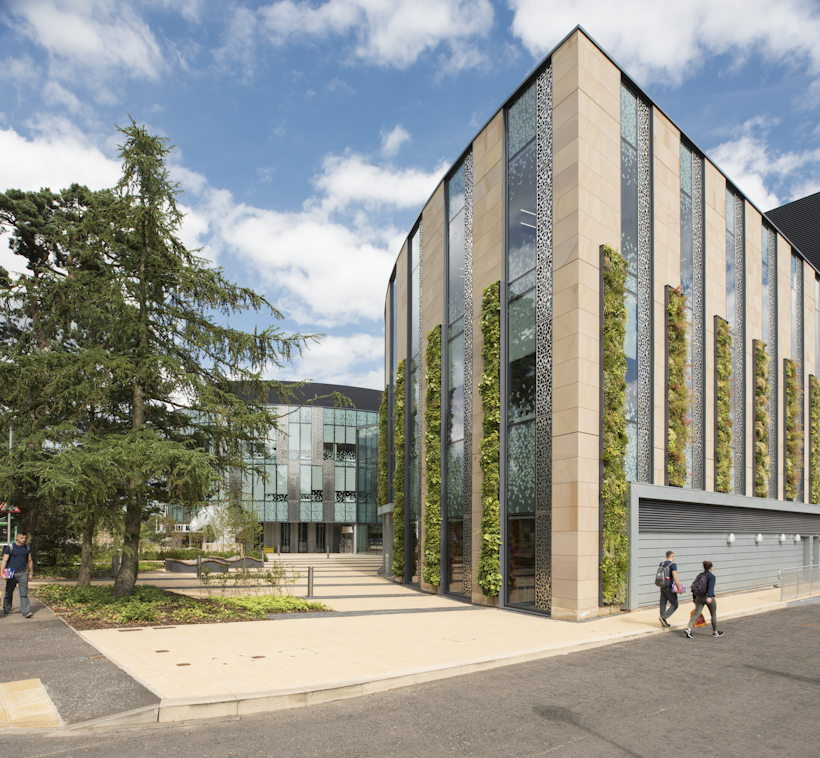
12. Can a living wall be removed and placed on another elevation?
A living wall can be removed and placed on another elevation, but that will incur extra costs.
13. What do we gain from having a living wall on our property?
There is much to gain from having a living wall on your property, from supporting your CSR strategy, to the building’s visual appeal and investment value. In an office setting, there are multiple benefits for your staff’s well-being.
Studies collated by Green Over Grey and Mott MacDonald show how having plants around a building can increase real estate values by up to 20%, in a retail setting, the use of vegetation and landscaping can increase customer spend by 8-12%, and how in place with access to nature there are increases of 4-5% in property price.
Other interesting studies found that clients are willing to pay 23% more for rooms utilising biophilic design principles, and employees with no view of nature take an average of 68 hours per year of sick leave more than those who have a view.
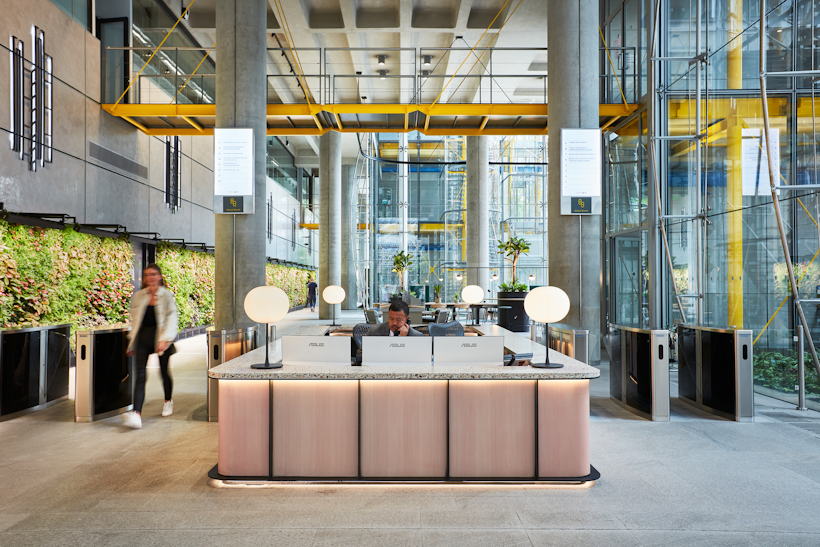
14. Does a living wall have acoustic properties?
A living wall does have acoustic properties. In independent tests on living walls, walls of a modular design were proven to absorb sound better. In one study, an 80mm thick green wall reduced noise by 15dB (London Living Roofs and Walls Report in 2019).
Plants reduce noise by:
Deflection
Compared to a hard surface where sound waves bounce off, plants break up the sound waves and deaden the sound.
Absorption
Soil, leaves, branches and woodier stems absorb sound effectively.
Refraction
Plant leaves refract noise and eliminate echoes as the sound waves do not bounce off.
This living wall at Acopia Group was installed to create a sound barrier between the office and breakout space.
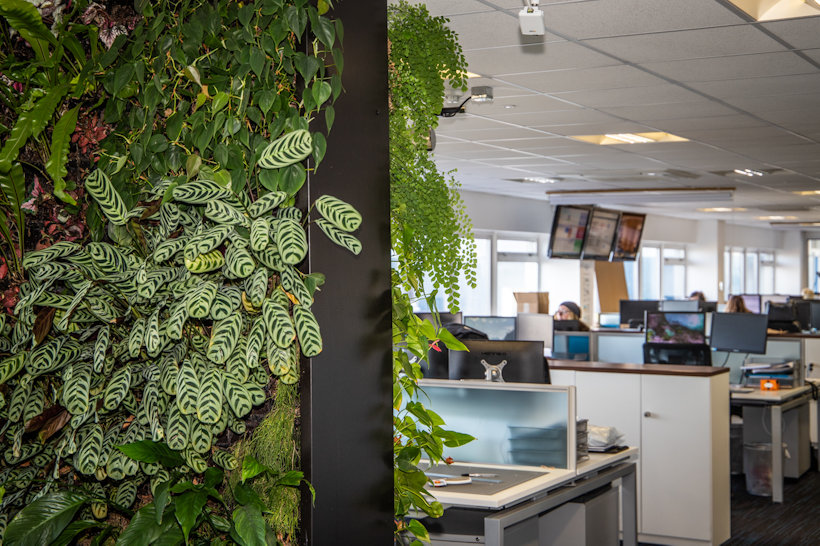
15. What U-value does a living wall have?
Living walls are not regarded as an insulation material but it still holds value for insulation. Behind the living wall there is a layer of insulation, and then you’ve got an additional insulating layer in the living wall itself. Whilst the plants play an important part in reflecting and absorbing UV rays, the soil and depth of the soil is what makes the biggest difference in regulating temperatures.
In fact, the London Living Roofs and Wall Report, 2019, states that in hot, dry summers, green walls have been shown to reduce the temperature of the external building wall behind them by as much as 16°C.
16. Can a living wall be integrated with other façade systems?
A living wall can be integrated with other façade systems.
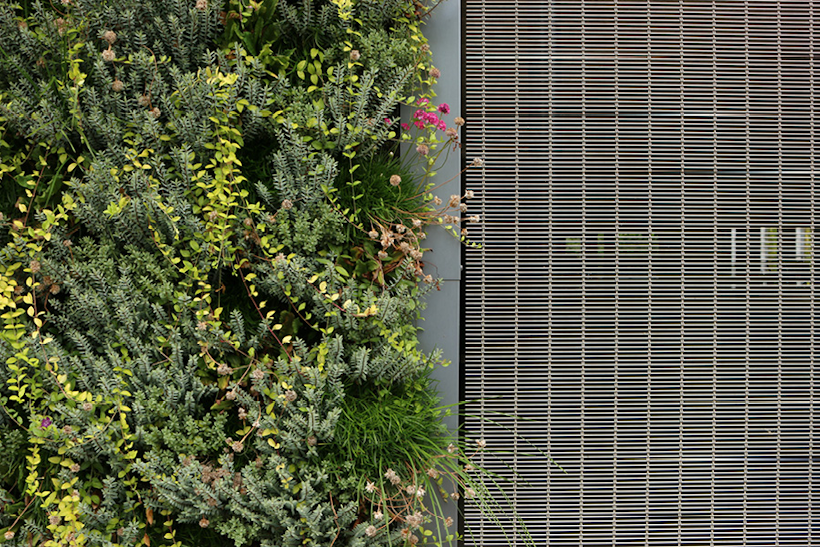
17. Can a living wall be retrofitted onto a building?
A living wall can be retrofitted onto a building. We have several build-ups for different installation scenarios, including retro fit. For this we’d typically use our aluminium baton system. You can find out more in our installation guide here.
18. How much space is needed for the irrigation system of a living wall?
The space required for the irrigation system of a living wall is a 4m² wall space with a depth of 1m if your system is with a tank (typically needed if your living wall is over 30m²).
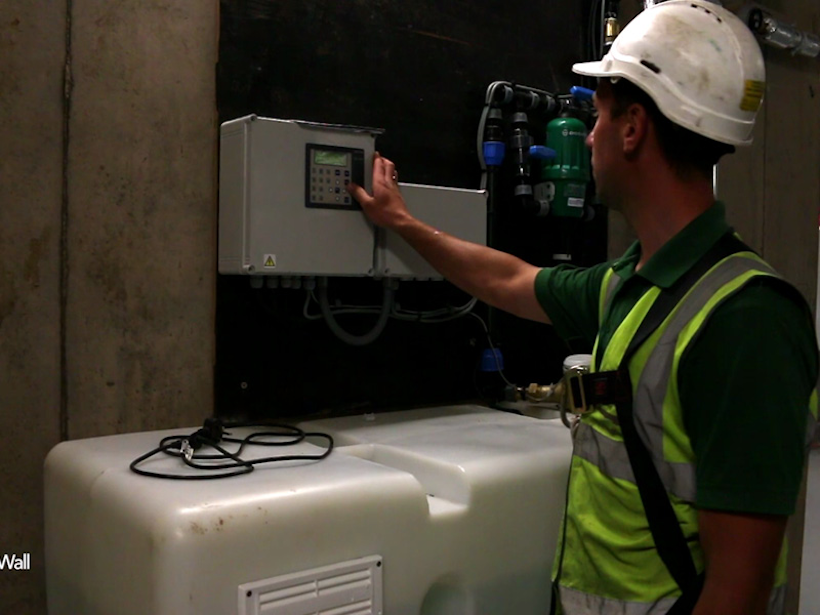
19. What are the annual running costs for a living wall?
The annual running costs of a living wall are the water and electricity required for the irrigation system. The electrical loading is minimal, and the water required for a sunny wall and a shady wall is as follows:
Sunny wall: 16.8 litres/m²/week
Shady wall: 7.6 litres/m²/week
The annual maintenance cost is approximately 10-12% of the original cost of the living wall.
20. Do we need planning permission for a living wall?
To know whether planning permission is required for your living wall, we’d recommend checking with your local authority.
Have we answered all your questions about living walls?
We’re here to talk if you have any questions or would like more information on living walls and our process that turns your idea into a reality. Email us at enquiries@ans.global or call +44 1243 545818 to start a conversation.
Other resources you may be interested in:
Blog: What will each season bring for your living wall?
Flipbook: The 2022 Storybook

_hksxw.jpg?w=580&h=580&q=90&auto=format&fit=crop&crop=edges,focalpoint&fm=png)